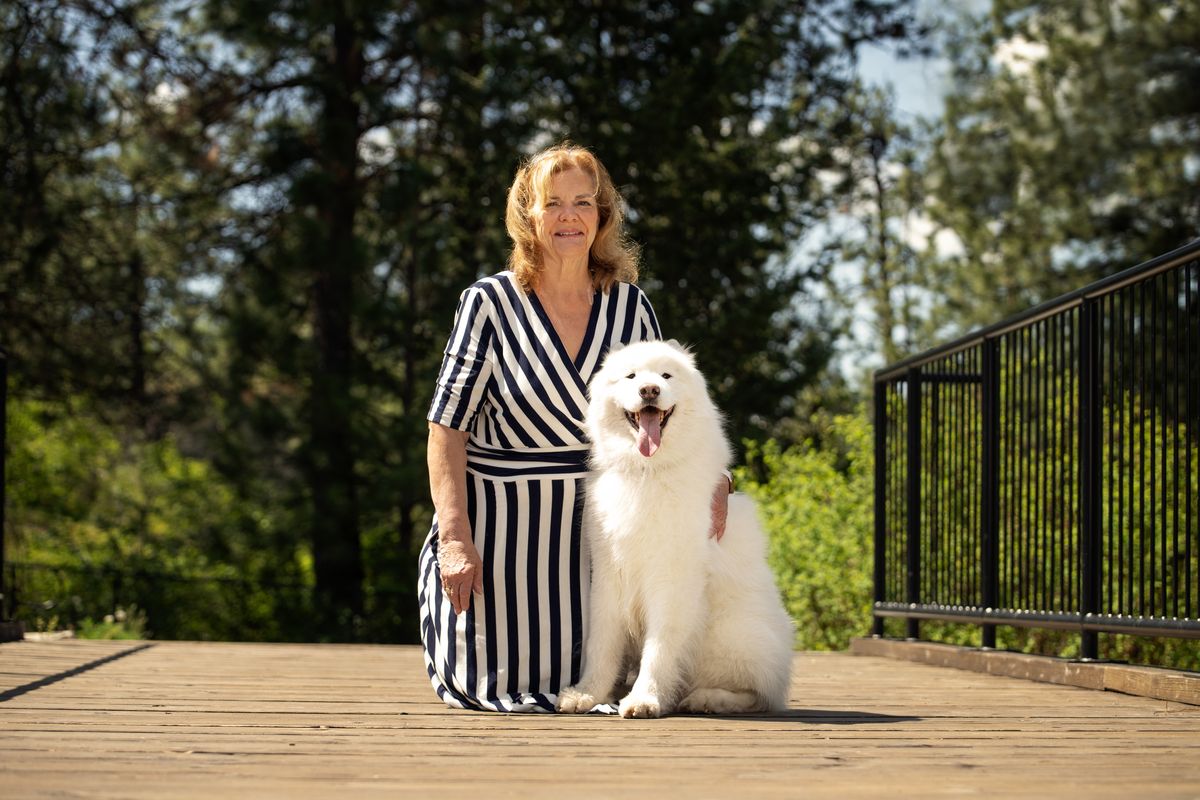How a Samoyed dog lover came to be a judge at the international dog competition taking over the Spokane County Fair and Expo Center this weekend

It’s no easy task learning the judging standards of one dog breed. Now imagine learning the standards for 30 of them.
That’s the challenge Cheri Hollenback faces. A Samoyed fancier and dog show judge from Coeur d’Alene, Hollenback is deep into her journey toward full certification in the working dog group. This group, which includes breeds like the Akita, Bernese mountain dog, Great Pyrenees and Saint Bernard, is made up of some of the largest and most powerful dogs, each bred with specific purposes to assist humans, according to the American Kennel Club.
Hollenback’s love for dogs, particularly Samoyeds, began long before she set her sights on becoming a judge.
“I was shopping for a sheltie and a friend mentioned how wonderful Samoyeds were,” Hollenback recalled about that fateful moment in 1981. “So I read a couple of books about them, visited a litter and fell in love. I can’t describe it any better way. The puppies are so stinking adorable and cute.”
She learned all she could about the breed, but all the reading in the world couldn’t prepare her for the special Samoyed brand of independence and the dedication required to train a working dog.
“Now I can’t go back; I’m even a bit of a breed bigot,” she said. “I like dogs in general, but I really love my Sams.”
She ended up with two dogs from the same breeder, who took the male to a show. The breeder returned with a “mitt full of ribbons and trophies,” Hollenback said, and she was hooked.
She started showing herself after breeding her first litter in 1991 and then moved into judging in 2008.
As a reputable breeder and show handler, Hollenback knew the intricacies of the Samoyed standards, such as the position of the eyes and the fur quality.
“In the Samoyed world, I value their survival characteristics,” she said. “It’s something that’s going to be important for that dog to be able to survive in a harsh Arctic climate. Those are the things you look for in a working dog breed: What are the things that are really critical for that breed’s ability to do the job that it was originally bred to do?”
Hollenback is certified to judge 20 of the 32 breeds listed in the AKC’s Working Dog Group. She wants to be fully certified to judge the entire group within the next year, a time-intensive project, but one that will allow her to judge in more shows.
She’ll put some of her new knowledge to the task this weekend during the International All Breed Canine Association’s Spokane Valley Sieger at the Spokane County Fair and Expo Center.
Hollenback is one of six judges. She’s looking at it as a learning experience for herself, but it’s also a great way for novice dog lovers to get involved in showing.
IABCA events are less stringent than AKC shows, allowing participants to interact with the judges and get pointers on how to improve their showmanship.
“At AKC or Canadian Kennel Club shows, judges evaluate the dogs, make their selections and that’s it,” Hollenback said. “There’s no explanation for the choices made. At this show, every dog gets a thorough critique covering everything from coat quality to structure and movement.
“It reminds me of the more laid-back atmosphere of Canadian shows. We have more time to sit down with the exhibitors after their dog has been presented, go over the evaluation and explain some of the more technical terms like ‘stifle’ or ‘croup.’ It’s a great learning experience, especially for those new to the dog show world.”
The IABCA, based out of Salem, was founded to give American dog lovers an opportunity to compete for international titles without exposing their dogs to intercontinental travel. Not only does it serve as a competition venue for rare breeds that aren’t recognized by the AKC, it also allows for neutered dogs to compete for conformation titles. Mixed breeds and dogs with limited registrations are also welcome.
“For many people,” Hollenback said, “this is their first introduction to the dog show world, and so it’s a little bit more casual. It reminds me of the Canadian shows that are oftentimes much more relaxed.”
The Spokane Valley Sieger will feature four shows, two each day. A schedule is posted on the show’s IABCA.com page, detailing when specific breeds will be exhibited and in what ring they are competing.
Hollenback encourages dog lovers to attend, cheer on their favorite dogs and chat with the judges – even as an audience member. Non-competing dogs should be left at home, though.
“Bring a chair and watch,” she said. “Bring your questions, just come and spend the day.”